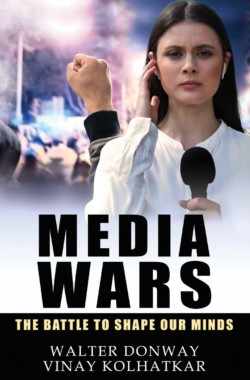Central Banks: Alchemists of Finance—Part II
This is Part II of the series Central Banks: Alchemists of Finance. Part I can be found here.
Discount Window Lending
When most people think about the Federal Reserve (the central bank in United States) they immediately think about interest rates. The Federal Reserve mainly affects interest rates in the United States by setting of the Federal Funds Rate and by the Discount Rate. The Federal Funds Rate is the interest rate at which banks lend reserve balances to each other. The Discount Rate is the interest rate that the Federal Reserve charges banks to borrow from the Federal Reserve. Both of these are related to the Federal Reserve’s function as a lender of last resort and are intended to prevent a “run on a bank.”
One of the main justifications for creating the Federal Reserve was to reduce the frequency of this [bank runs and bank failures] occurring. The empirical evidence is mixed on this issue.
A run on bank is when a bank does not have enough cash (species) on hand to meet its customers demand for cash. This can occur to a sound bank and may be just a cash flow issue or it can be the result of a legitimate lack of solvency and confidence in the bank. One of the main justifications for creating the Federal Reserve was to reduce the frequency of this occurring. The empirical evidence is mixed on this issue. The Federal Reserve was created before the Great Depression and there were huge numbers of bank failures during that time. However, the number of runs on banks and the number of bank failures where depositors lost money have probably decreased in frequency since the Great Depression. This isn’t necessarily a good thing though, as the free market is self correcting, and any interference in its self correction will lead to problems elsewhere.
When the Federal Reserve changes the Federal Funds Rate or the Discount Rate, which they usually change at the same time, it affects the interest rates that banks charge. If the Federal Reserve increases either or both of these interest rates it usually causes banks to increase the interest rates they charge customers. Generally the goal of raising interest rates is to reduce the number of loans banks are making and thereby decrease the money supply or slow its growth. The opposite is true when the Federal Reserve lowers interest rates. Thus it is normally considered inflationary when interest rates are lowered and deflationary when interest rates are raised. Unfortunately, the empirical evidence is a bit murky on this issue. For instance, interest rates were very low during the Great Depression in the United States and the money supply was shrinking.[1] Milton Friedman and Anna Jacobson Schwartz argued that the Federal Reserve failed to fulfill their responsibility of lender of last resort.[2]
Since there appears to be some contradiction between the empirical data and the theory, let’s examine this issue more closely. When the Federal Reserve increases interest rates above the free market rate the result is that some projects that would have made economic sense to fund with a loan no longer are funded. As a result fewer loans will be initiated by banks than would have been the case if interest rates were at the free market rate (the free market rate is the interest rate that banks would charge if there was no central bank and the market was free of government interference). This will reduce the money supply. However this is a transient effect. Once the economy has adjusted to the new interest rate, loans will be created at this new lower rate. At this point it is likely the money supply will grow (shrink) roughly at the same rate as the economy, as explained in my earlier article on Banking. If the Federal Reserve raises interest rates too far above the free market rate it can cause a nationwide liquidity crises, which will destroy some wealth that was or would have been created. The government can destroy wealth, but it cannot create wealth, only redistribute it.
If the Federal Reserve sets the interest rate lower than the free market rate but not too low, then more projects that would have not made economic sense to fund with a loan now are funded. This results in a one-time increase in the money supply and after that the money supply should grow at about the same rate as the economy. As a result, lowering the interest rate below the free market rate, but not too low, will result in a one-time increase in the money supply.
Since in the United States we cannot audit the Federal Reserve citizens have very little idea of what is really happening. Central banks and the legal tender laws they depend on are designed to obscure what the government and central bank are doing. This allows for all sorts of mischief and inside deals.
If a central bank lowers the interest rate that it charges banks too low, banks will have no incentive to initiate loans. How low? Well if the interest rate that banks get charged for borrowing from the central bank is lower than they can get on Treasuries, then the banks can make easy profits and have less incentive to seek commercial loans. As a result, when central bank interest rates are set too low, it can result in a contraction of the money supply.
This shows that low interest rates are not the cause of long term inflation and if the central bank interest rate is too low it can be deflationary. This is likely what has been happening in Japan since the 1990s and happened in United States during the Great Depression. Other government policies can also effect how the economy behaves, which makes it hard to nail down the exact effect of the central bank policies. For instance, Friedman and Schwartz seemed to blame the Federal Reserve for everything that happened in the Great Depression, however it is clear that other anti-free market policies by Roosevelt and by Hoover before him also contributed significantly to the Great Depression.
Central banks can also change the number of loans that are initiated by changing the reserve ratio requirement.
A commercial bank’s reserves normally consist of cash owned by the bank and stored physically in the bank vault (vault cash), plus the amount of the commercial bank’s balance in that bank’s account with the central bank.[3]
However, this also should have a one-time effect on the money supply. The result is that long term inflation is not caused by a central bank’s reserve ratio policy. A central bank’s failure to act as a lender of last resort may cause an extended period of deflation however.
Open Market Operations
Another tool of central banks is open market operations where the bank goes into the market and sells or buys securities, usually Treasury bonds. When a central bank buys securities by borrowing from Treasury it increases the money supply. This operation involves the central bank creating money (a computer entry without any associated liability) and then buying the securities, which puts money into the economy. As those bonds (normally the central bank buys bonds) are paid off it decreases the money supply. As a result, buying securities results in a one-time increase in inflation that is removed as the bond is paid back. Of course the central bank can continue to buy bonds if it wants to continue to inflate.
Alternatively, the central bank can sell securities and not repay any borrowing wit the proceeds, which action results in a decrease in the money supply as private parties trade cash for the security. Each purchase by the central bank is a one-time decrease in the money supply that is removed over time as the bond is paid back.
Both of the scenarios above assume that the central bank is buying or selling bonds (or other securities) at their free market rate. If the central bank overpays for a bond the amount that it overpays for the bond is a direct creation of money and is not redeemed as the bond is paid off.
When a central bank starts buying a significant percentage of the government bonds when issued, the most likely reason is that private buyers are not willing to purchase the bonds at the price (interest rate) the government wants to sell them at. This is one of the surest signs that the central bank is creating large amounts of money to finance the government. However, itis not obvious how much money has been directly created, because that depends on how the bond purchase is financed. Since in the United States we cannot audit the Federal Reserve citizens have very little idea of what is really happening. Central banks and the legal tender laws they depend on are designed to obscure what the government and central bank are doing. This allows for all sorts of mischief and inside deals.
Attempts to measure money creation, M0-M4, do not differentiate between these mechanisms and therefore are poor at predicting inflation.
___________________________________________________________________________________________________________________________________________________________________________________________
[1] Ivan Pongracic Jr., The Great Depression According to Milton Friedman, FEE, Saturday, September 01, 2007, . https://fee.org/articles/the-great-depression-according-to-milton-friedman/, accessed January 14, 2017.
[2] [2] Ivan Pongracic Jr., The Great Depression According to Milton Friedman, FEE, Saturday, September 01, 2007, . https://fee.org/articles/the-great-depression-according-to-milton-friedman/, accessed January 14, 2017.
[3] Wikipedia, https://en.wikipedia.org/wiki/Reserve_requirement , accessed January 14, 2017.
« Love and Anthropology Going Nowhere: Utopia in the Age of Politics »










